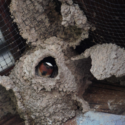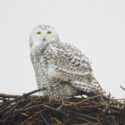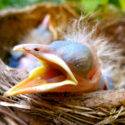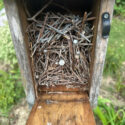 Photo ©
Keith Williams
Photo ©
Keith Williams

Dive Into Cliff Swallow Data
If you have some free time this month, consider joining our Cliff Swallows project over on Nest Quest Go! Cliff Swallows are a colony-nesting species that is in decline across North America. We’ve partnered with Zooniverse to enable the transcription of thousands of our historic nest record cards—and we’re almost finished! As a volunteer, you can help by transcribing decades-old paper nest records and turning them into digital data for NestWatch. Help us learn more about these adorable aerial insectivores by joining in today!

Year-end Reminders
As a friendly reminder, December is a good time of year to finish entering your NestWatch data. Next month we will update our dataset download for the year, as well as begin analyses for our 2023 annual report. Having your data entry completed by the year’s end (December 31) ensures that your nests will be included. However, as always, you are welcome to enter old data at any time (years–or even decades–late is better than never).
The Cornell Lab of Ornithology will be closed from Dec. 23 – Jan. 1 for winter break, and we won’t be monitoring our mailboxes at that time. We appreciate your patience and encourage you to ask your questions early if you need a timely response. We wish everyone a safe and peaceful holiday season.

Cold Snaps and Heat Waves
Many songbirds are nesting earlier in spring because of warmer temperatures brought about by climate change. But the shift brings another danger that is especially deadly for nestlings: greater exposure to temperature variability in the form of cold snaps and heat waves. A new study from Cornell documents that such extremes result in more nest failures. Read about this new research on our blog.

Nailed It!
Check out this nest! Jack Perreault found this House Wren nest in one of his nest boxes as he was cleaning them out this fall. House Wrens typically make nests out of small twigs, but Jack says he counted 102 nails of varying types incorporated into these nesting materials. A typical two-inch roofing nail weighs about three grams, which is about a quarter of the weight of an adult House Wren—an amazing feat indeed!